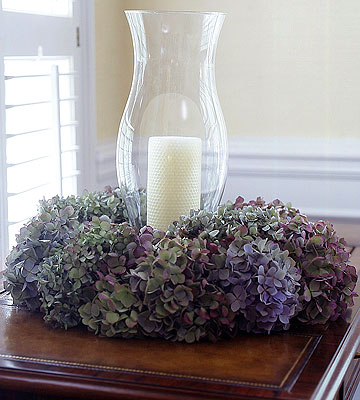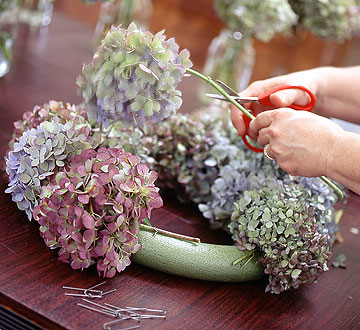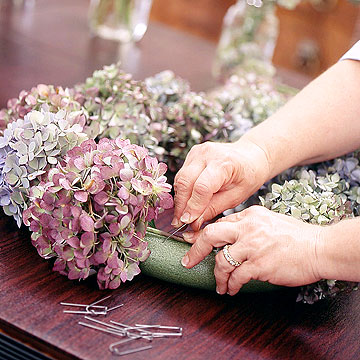






For a few weeks each summer, Gloria Ward's dining room table is all about hydrangeas. Gloria, whose Atlanta-area garden is a showcase for her favorite flowering shrub, sets up a convenient dining-room laboratory where she dries blossoms cut from her garden.
The process begins mid to late summer when Gloria strolls through the garden in search of viable candidates. "You should cut the blooms as soon as they feel papery and less supple than they were earlier in the season," she says. The papery stage typically occurs at least six weeks after the flowers open, although sunlight can hasten maturity.
Learn how to dry peonies.
continue reading below
In the coolness of morning, Gloria arms herself with pruning shears and a bucket of water. She collects flower heads, cutting stems at an angle, stripping leaves, and placing the cuttings in water.

Indoors, she recuts the stems at varying lengths and places them in jars containing about four inches of water, about a half-dozen stems per jar. By staggering stem heights, each head benefits from air circulation, which is crucial in drying. Gloria then places the jars in her dining room, out of direct sunlight or bright light, for one to two weeks. If, after that time, the water has evaporated and the flowers still aren't dry, she adds more water and gives the blooms more drying time.

Compared to the bright, clear colors of fresh blooms, air-dried hydrangeas take on muted hues. Once the blooms are dry, Gloria arranges them in vases, wreaths, and topiaries. When displayed away from humidity and direct sunlight, dried hydrangeas last indefinitely.
Copyright © www.100flowers.win Botanic Garden All Rights Reserved